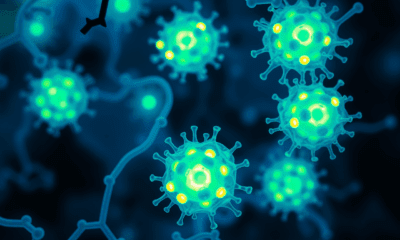While we try to keep things accurate, this content is part of an ongoing experiment and may not always be reliable.
Please double-check important details — we’re not responsible for how the information is used.
Bacteria
Unraveling the Mystery of Post-Treatment Lyme Disease Syndrome: A Breakthrough in Understanding its Causes
Scientists believe they know what causes the treated infection to mimic chronic illness: the body may be responding to remnants of the bacteria that causes Lyme that tend to pool in the liver and joint fluid.

Animals
“New Bat-Borne Viruses Discovered in China Pose Potential Pandemic Threat”
Two newly discovered viruses lurking in bats are dangerously similar to Nipah and Hendra, both of which have caused deadly outbreaks in humans. Found in fruit bats near villages, these viruses may spread through urine-contaminated fruit, raising serious concerns. And that’s just the start—scientists found 20 other unknown viruses hiding in bat kidneys.
Bacteria
Unveiling the Secrets of Pandoraea: How Lung Bacteria Forge Iron-Stealing Weapons to Survive
Researchers investigating the enigmatic and antibiotic-resistant Pandoraea bacteria have uncovered a surprising twist: these pathogens don’t just pose risks they also produce powerful natural compounds. By studying a newly discovered gene cluster called pan, scientists identified two novel molecules Pandorabactin A and B that allow the bacteria to steal iron from their environment, giving them a survival edge in iron-poor places like the human body. These molecules also sabotage rival bacteria by starving them of iron, potentially reshaping microbial communities in diseases like cystic fibrosis.
Bacteria
A New Hope Against Multidrug Resistance: Synthetic Compound Shows Promise
Researchers have synthesized a new compound called infuzide that shows activity against resistant strains of pathogens.
-

 Detectors2 months ago
Detectors2 months agoA New Horizon for Vision: How Gold Nanoparticles May Restore People’s Sight
-

 Earth & Climate4 months ago
Earth & Climate4 months agoRetiring Abroad Can Be Lonely Business
-

 Cancer3 months ago
Cancer3 months agoRevolutionizing Quantum Communication: Direct Connections Between Multiple Processors
-

 Agriculture and Food3 months ago
Agriculture and Food3 months ago“A Sustainable Solution: Researchers Create Hybrid Cheese with 25% Pea Protein”
-

 Diseases and Conditions4 months ago
Diseases and Conditions4 months agoReducing Falls Among Elderly Women with Polypharmacy through Exercise Intervention
-

 Chemistry3 months ago
Chemistry3 months ago“Unveiling Hidden Patterns: A New Twist on Interference Phenomena”
-

 Albert Einstein4 months ago
Albert Einstein4 months agoHarnessing Water Waves: A Breakthrough in Controlling Floating Objects
-

 Earth & Climate3 months ago
Earth & Climate3 months agoHousehold Electricity Three Times More Expensive Than Upcoming ‘Eco-Friendly’ Aviation E-Fuels, Study Reveals





























